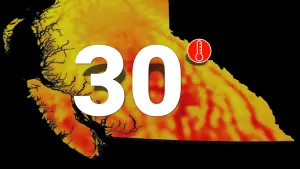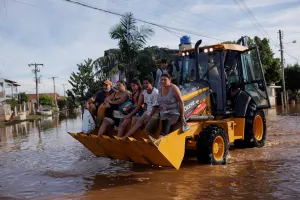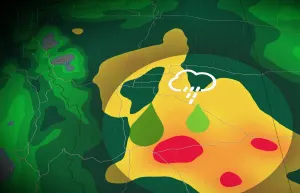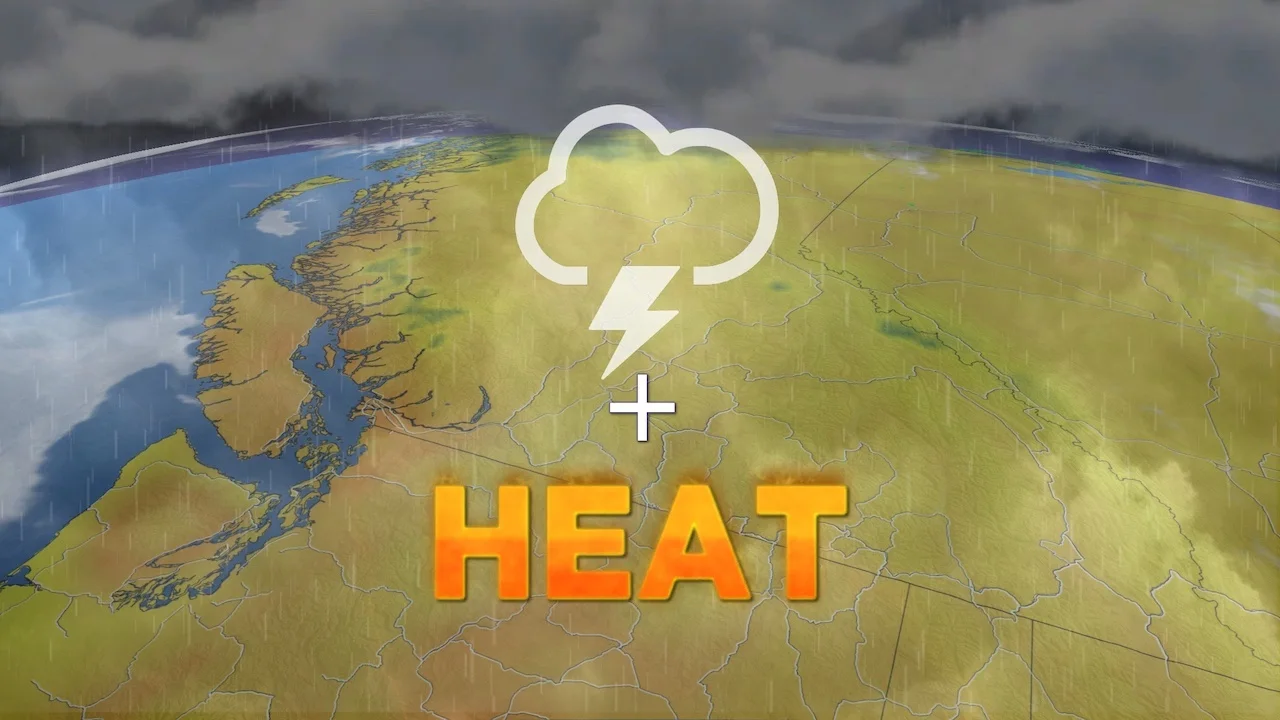
Canada notches first 40°C temperature of 2022 as high heat persists
The high heat settled over British Columbia this week is a formidable dose of summertime for the region. Temperatures cracked the 40-degree mark across the Interior, marking the first time we’ve seen a 40°C reading in Canada so far this year. The heat will stick around through the weekend, with a wildfire risk and potential health issues lingering for the duration. More on what to expect into the weekend, below.
MUST READ: 6 long weekend must-haves for parks, picnics and camping
Ridge responsible for heat lingers into the weekend
The heat over B.C. isn’t anywhere near the historic heat we saw last year, but it’s a formidable spell of extreme temperatures that’s broken records, fuelled wildfires, and posed a threat to the health of vulnerable populations across the region.
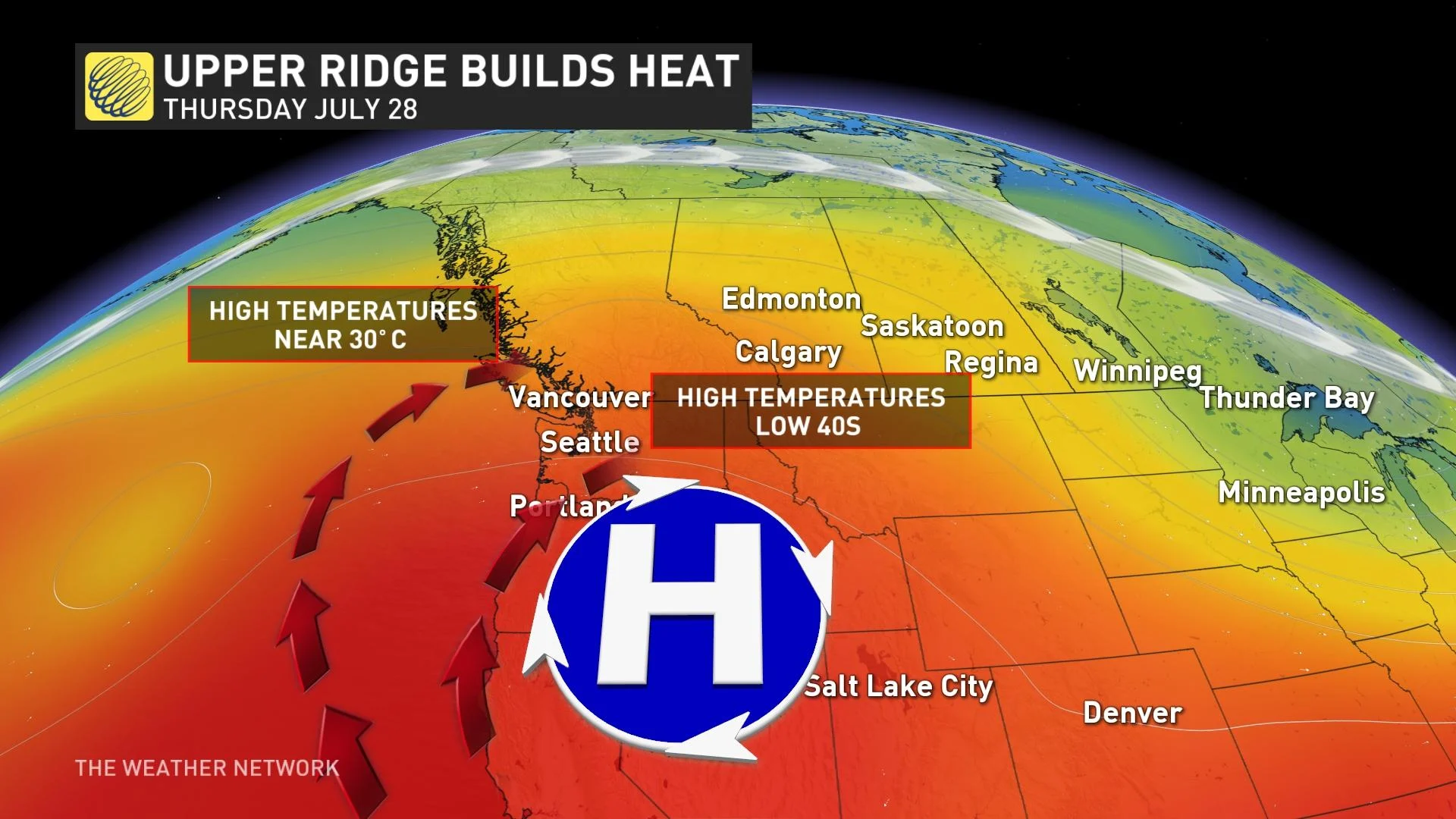
The upper-level ridge responsible for bringing the hot temperatures to the West Coast this week will stick around for at least a couple more days. Heat warnings remain in place for most of the province.
This familiar pattern will send daytime high temperatures well into the 30s for many communities through the end of the week. We’re even on track to see a few days of high temperatures in the 40s across parts of the Interior, including Osoyoos, where highs could crack the 40-degree mark each day through Sunday.
CHECK IT OUT: This simple trick may save many kids' lives during heat wave
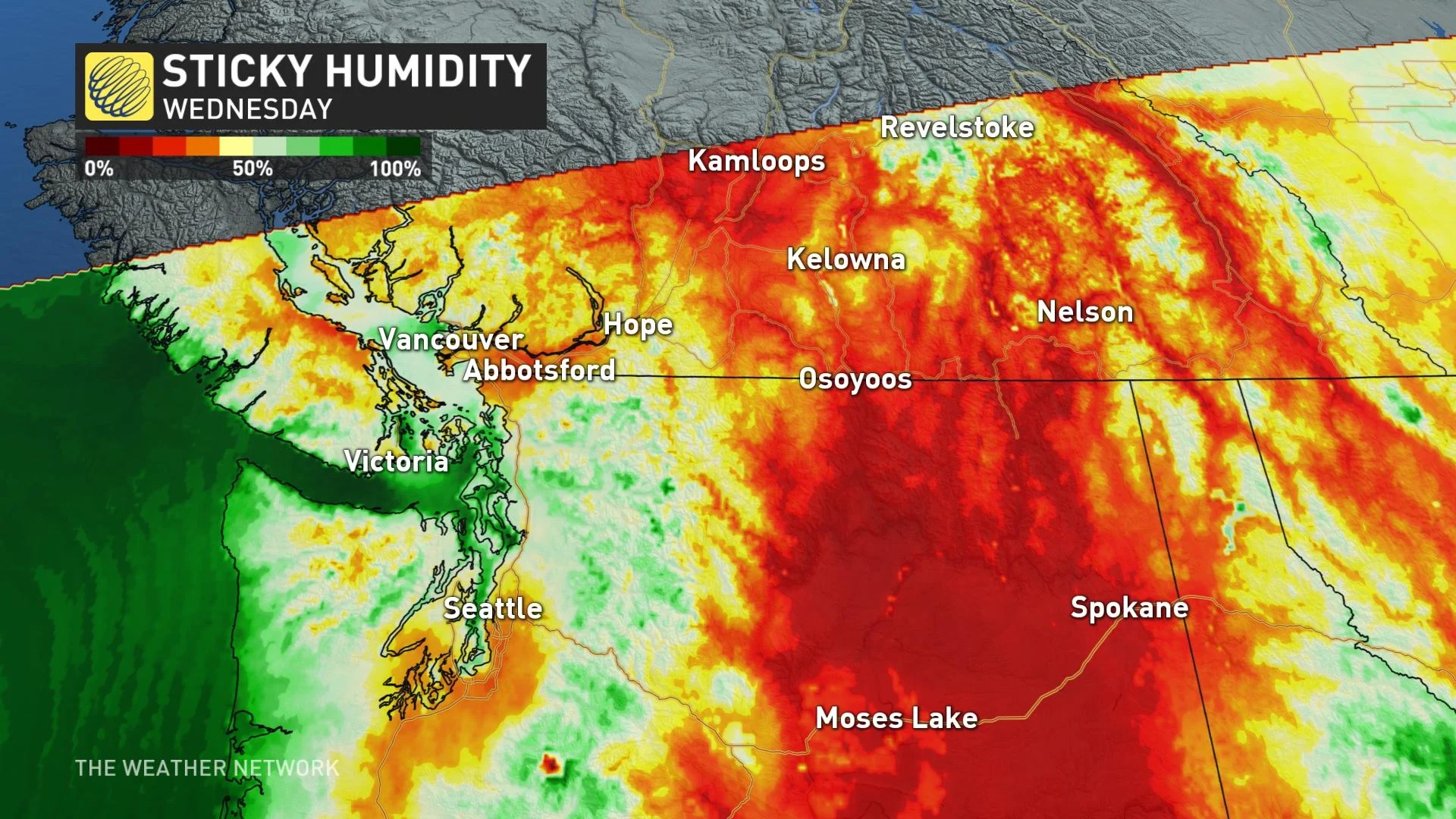
It’s not a dry heat, either. The excessive heat is made even worse by the relatively high dew points across the region. Humidity makes the heat even harder on your body by disrupting your ability to cool off through sweating.
Making matters worse, nighttime low temperatures remain on the warmer side due to the extra moisture in the air, preventing residents without proper means of cooling off from feeling meaningful relief overnight. This one-two punch of high heat during the day and sultry nights raises the risk for heat-related illnesses in vulnerable populations.

For some perspective on the heat, Vancouver’s seasonal high for the last week of July is around 23°C. Not much relief is expected in the evening and overnight as temperatures will sit between the upper teens to mid-20s.
The heat is expected to peak in the Lower Mainland and Interior through Friday, and we may see temperatures hit the 40s in parts of the latter. Thunderstorms and dry lightning is possible with further risk for wildfires.
On Friday, the ridge flattens somewhat and temperatures moderate, but it will still be warm. The heat will fade on the weekend, with seasonal temperatures returning and dominating next week. However, very dry weather will persist over the next 7-10 days, with the wildfire risk likely remaining high or extreme.
Canada’s first 40-degree reading recorded on Tuesday
This latest spell of heat allowed Lytton, B.C., to notch Canada’s first 40°C reading of 2022 on Tuesday. Several other communities across the Interior followed suit on Wednesday, with a stretch of 40-degree high temperatures lasting until the weekend in some spots.

Lytton’s location in the Fraser Valley routinely delivers this town some of the hottest weather observed in Canada.
The town made international news last year when it shattered Canada’s all-time high temperature record three days in a row, topping out at a whopping 49.6°C on Tuesday, June 29, 2021. A wildfire fuelled by the historic heatwave razed most of the city the following day.
WATCH BELOW: No A/C? These are the quick and easy things you should be doing
Multiple wildfires ongoing across the province
The parched conditions, combined with an extremely steep terrain of the Fraser Canyon, have caused the Nohomin Creek wildfire to grow in size and may continue to do so in the days ahead. It has now expanded to 2,364 hectares, according to the BC Wildfire Service, as of Tuesday morning.
On Monday afternoon, fire activity increased in response to consistent hot and dry conditions. As of Tuesday it has not progressed further. Temperatures will continue to rise this week into the mid- and upper 30s while relative humidity will dip into the teens.
As a result of the wildfire, air quality is poor in nearby communities due to the smoke. Environment and Climate Change Canada (ECCC) has issued a special air quality statement for Fraser Canyon including Lillooet and Lytton.
Check back frequently for updates on this impactful heat event across B.C.







